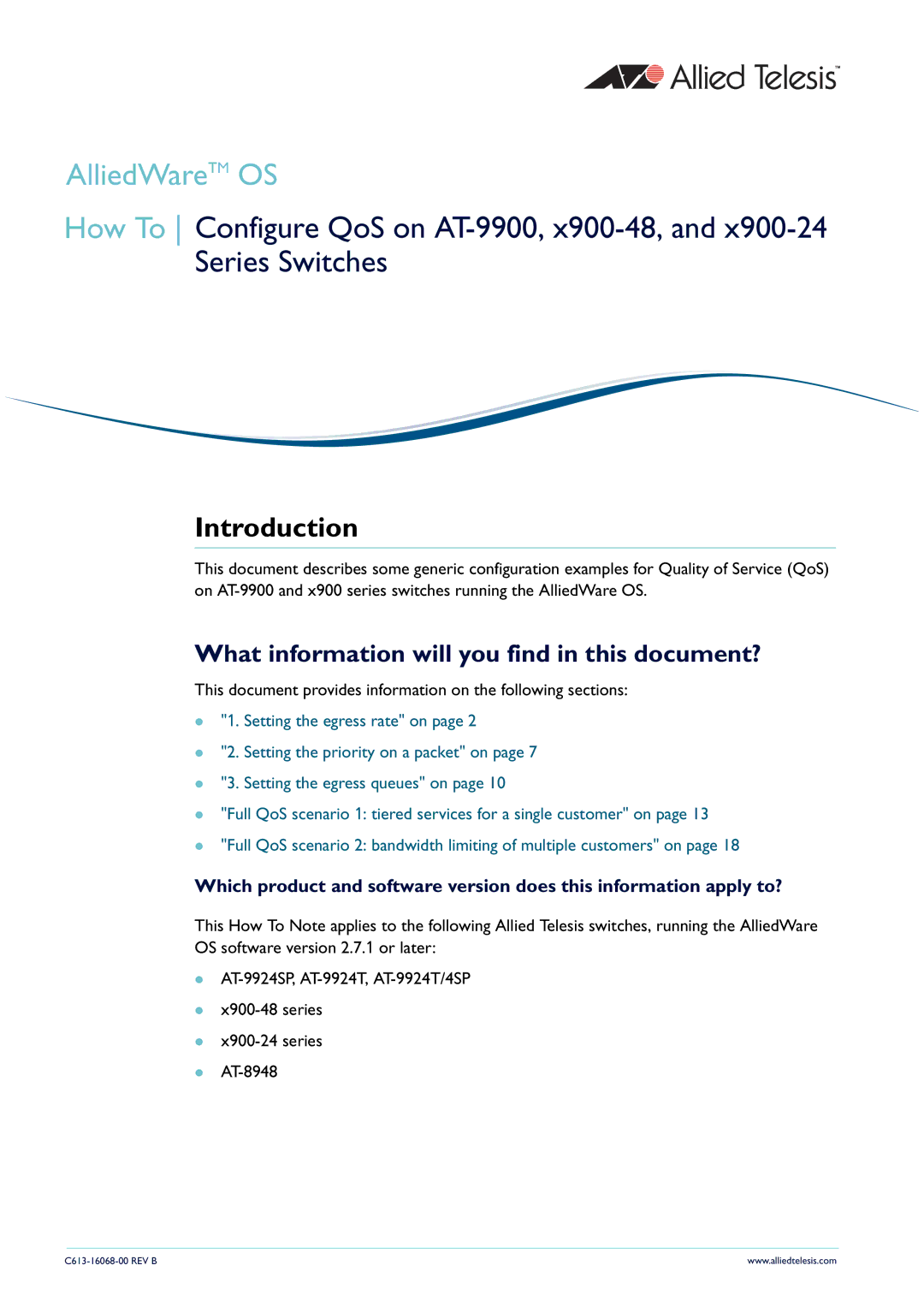x900-48 series specifications
Allied Telesis X900-48 series switches are designed for high-performance networking, making them ideal for enterprise and service provider environments. This series offers advanced features and capabilities that ensure efficiency, scalability, and reliability for demanding network infrastructures.One of the main features of the X900-48 series is its high port density. With 48 Gigabit Ethernet ports, the switch provides ample connectivity options for numerous devices, which is essential for organizations experiencing rapid growth. Additionally, it supports 10 Gigabit uplinks, allowing for high-speed connections to core networks or other switches, optimizing overall network performance.
The X900-48 series is equipped with a rich set of Layer 2 and Layer 3 features. It supports advanced routing protocols such as OSPF and BGP, enabling efficient and intelligent data routing. The inclusion of VLAN support allows for network segmentation, enhancing security and performance by isolating different traffic types. The support for IPv6 ensures that the network can accommodate future growth as more devices come online.
Quality of Service (QoS) is another critical feature of the X900-48 series. It utilizes intelligent traffic management to prioritize critical applications, ensuring a consistent user experience even during peak loads. The switch supports Power over Ethernet (PoE/PoE+), allowing it to provide power to connected devices like IP phones, cameras, and access points over the same network cable, simplifying installation and reducing costs.
Security is paramount, and the X900-48 series takes this into account with features such as IEEE 802.1X port-based authentication, Access Control Lists (ACLs), and DHCP snooping. These measures protect the network against unauthorized access and enhance data integrity.
The X900-48 series is also built with energy efficiency in mind. It complies with energy standards and integrates technologies that reduce power consumption, making it a cost-effective choice for sustainable networking without compromising performance.
Overall, the Allied Telesis X900-48 series represents a robust, versatile, and efficient switching solution tailored for modern networking demands. Its combination of high port density, Layer 2/Layer 3 functionality, advanced traffic management, and security features makes it suitable for a wide range of applications, ensuring that organizations can meet their networking challenges effectively.

